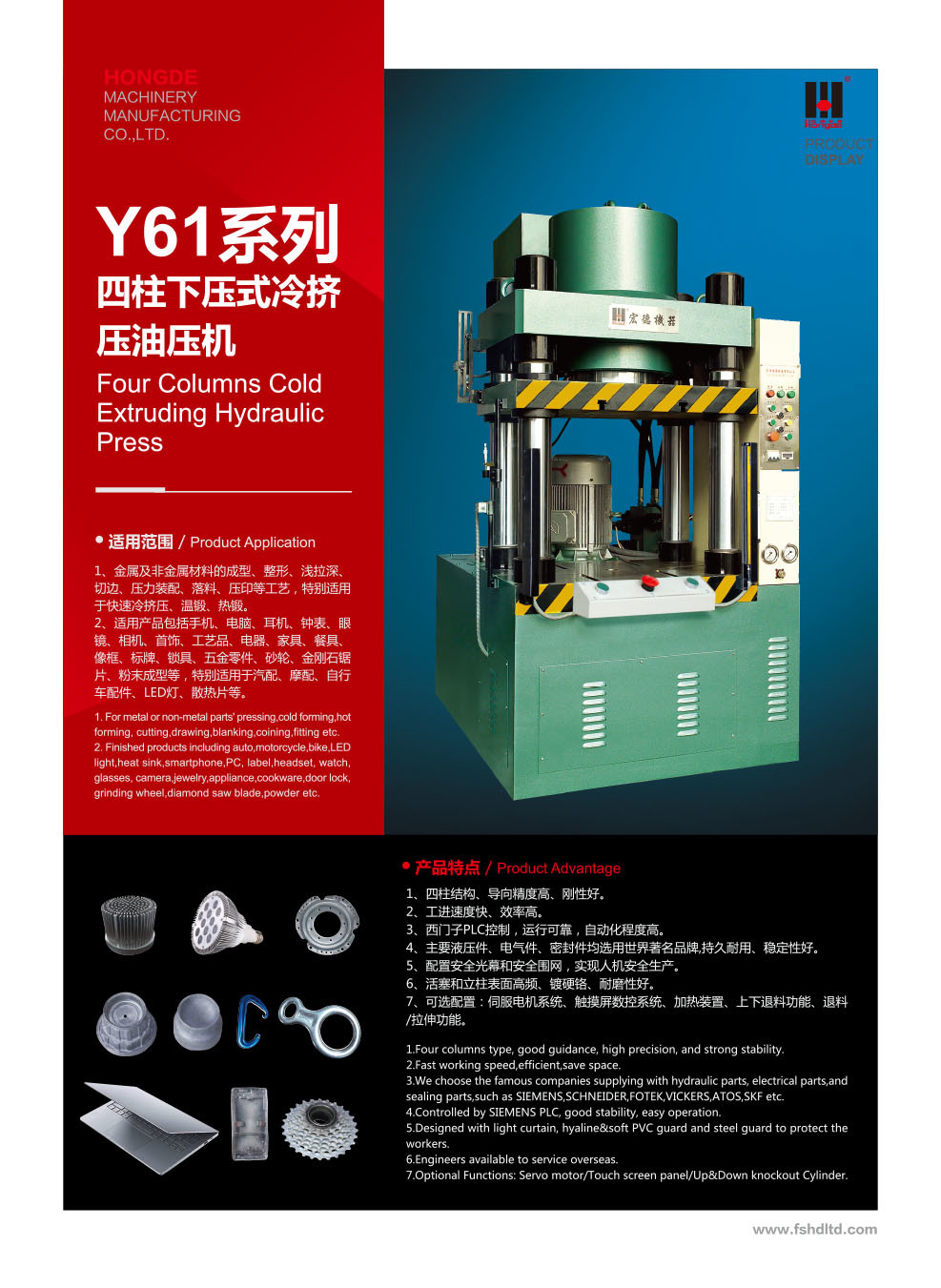Cold extrusion hydraulic presses, presses
A press is a forging machine driven by a crank link or elbow rod mechanism, a cam mechanism and a screw mechanism. A press is a machine tool that presses materials and deforms and breaks them by applying strong pressure to the billet to machine them into parts. Today, this article will introduce the characteristics and working principle of presses.
Keywords:
Cold extrusion hydraulic presses, presses
Classification:

Consulting hotline:
Detailed description
Characteristics of presses:
The press has a high impact force and is suitable for separation processes such as falling and cutting. Hydraulic presses have stable load and are suitable for bending, stretching, shaping and other forming processes. However, the above view is the majority view, but Japanese research results show that the deformation of the stamped parts is not related to the stamping speed, and only when the press reaches more than 2000 times per minute does it have an effect.
From the efficiency consideration, mechanical press is higher. In terms of reliability, mechanical presses are more skinny, while hydraulic presses are generally prone to hydraulic problems such as oil leakage.
To sum up, except for shaping and corrective bending, it is recommended to use mechanical presses to improve efficiency.
Presses (including punch presses and hydraulic presses) are multifunctional presses with delicate structures. With a wide range of application and high productivity, it can be widely used for cutting, punching, dropping, bending, riveting and forming. By applying strong pressure on the metal blank, the metal is plastically deformed and fractured to be processed into parts.
Hydraulic press is a machine that transmits energy to achieve various processes manufactured according to Pascal's principle using liquid as the working medium. In general, it consists of a machine (main machine), power and hydraulic control system.
Working principle of presses:
When the press is working, the motor drives the big belt pulley (usually also used as flywheel) through the V-belt, and drives the crank slider mechanism through the gear pair and clutch, so that the slider and punch descend in a straight line. When the forging work is completed, the ram returns upward, the clutch is automatically disengaged, and the brake on the crankshaft is turned on to stop the ram near the upper dead center.
Each crank-slider mechanism is called a "point". Simple mechanical presses use a single point, i.e., only one crank-slider mechanism. Some mechanical presses with a large working surface use a double or four-point press in order to make the bottom surface of the ram evenly stressed and the movement smooth.
The load of the press is pulsed, i.e. the forging work time is very short in one work cycle. The short to high power is more than ten times larger than the average power, so the drive system has a flywheel. After the motor selected according to the average power is started, the flywheel runs to the rated speed and accumulates kinetic energy. After the punch touches the blank and starts forging, the motor drive power is less than the load, the speed decreases and the flywheel releases the accumulated kinetic energy to compensate. After forging is completed, the flywheel accelerates again to accumulate kinetic energy for the next use.
Previous page
Next page
Previous page
Next page
Engaging in Hydraulic Press ---Since 1996---
Service Support
Contact Us
Mr. Yang,Phone:0086-18033239126
WeChat:527700969
Address: 10#, Zhiye road, Songxia industrial park, Shishan town, Nanhai district, Foshan city, Guangdong province, P.R.C,528234.
Tel:0086-0757-85203155
Website:http://www.fshdltd.com
Official account

Copyright © 2023 Foshan Xinhongde Machinery Manufacturing Co., Ltd All rights reserved Powered by CEglobal Business license Privacy Policy

